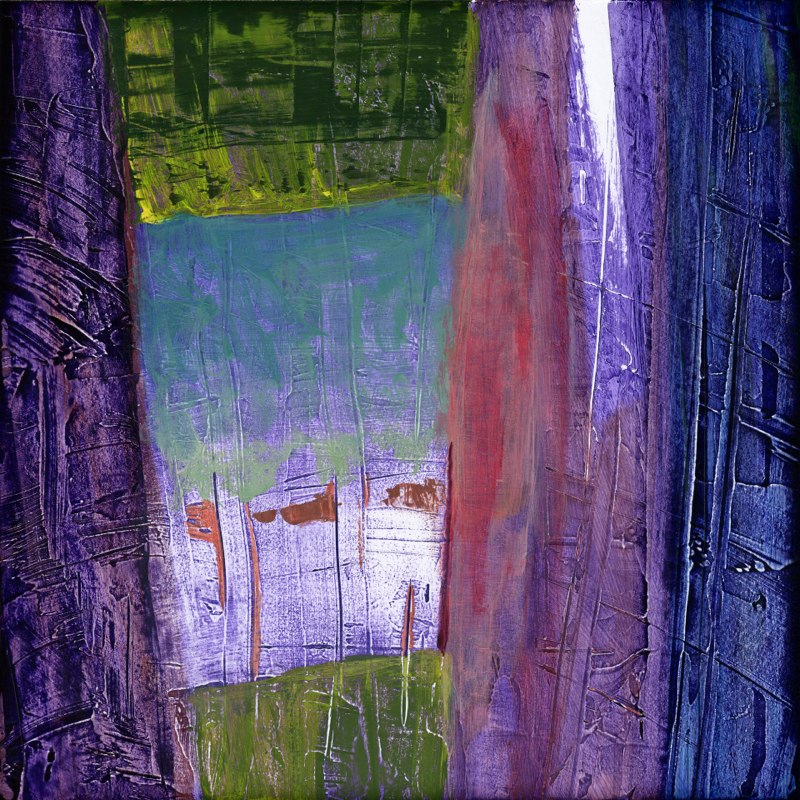Karin C. Davidson: Ruvanee, your story, “Craving,” is such a complicated and careful look at intimacy and, in a very restrained way, of sexuality. Sexuality is the theme of r.kv.r.y.’s Summer 2013 issue, and so I love that your story is included here. Would you speak about the origins of this story, how you came to write of this couple, exhausted and overwhelmed by their responsibilities of caring for the elderly, blessed and later unblessed by the presence of the young woman who comes to help them?
Ruvanee Pietersz Vilhauer: This story was influenced by an essay I had recently written, about an elderly relative’s struggle with dementia, but it arose primarily from my feeling exhausted by a set of administrative tasks at work—that had nothing to do with caring for the elderly—and wondering about the very human tendency to want an easy way out, and about the value of service and sacrifice. The idea of sacrifice—with its many negative as well as positive connotations—interests me; it is a theme I explore elsewhere as well.
KCD: “On the day Ivy Auntie went missing, Sriya Polgoda wished, once again, for more help.” This is the first line of “Craving,” an incredible first line in that it is deftly worded, each part so very simple, yet pointing straight into the conflict and the story’s heart. When you begin stories, do the drafted first lines lead you directly into the rest of the narrative, or do you find those intricate beginnings through revision?
RPV: Thank you for the kind words, Karin. There have been occasions when I’ve labored over first lines, revising wording and even the point at which a story begins. Most of the time, though, first lines come to me almost fully formed. Beginnings are much easier for me than endings, with which I struggle, revising over and over until I feel they are right.
KCD: Tradition, ritual, and religion are present in lines like: “Dharmapala bathed three lotus flowers in filtered water and placed them before the Buddha statue in the foyer. He knelt in gratitude, chanting the five precepts,” and “It is true, as the Buddha said, that craving leads to suffering.” These cultural elements inform the characters and add dimension and depth. As in “Craving,” many of your stories introduce these elements and at times relinquish them, especially when the dramatic action takes an unexpected turn.
Would you say that your background of growing up in Sri Lanka and living in places around the world, such as Australia, India, and Thailand, has influenced your writing and allowed you to include the details essential to your stories?
RPV: All the places I’ve lived influence my writing, and especially Sri Lanka, to which I feel a special closeness, having spent my most formative years there. I think religion and reverence are more a part of everyday life there than in the U.S. People who practice their religion aren’t oddities or noteworthy, because almost everyone has some sort of religious view. And the traditions and rituals of the main religions in Sri Lanka—Buddhism, Christianity, Hinduism, Islam—have a tendency to leak into each other. I grew up celebrating those mingled traditions. I think it is a challenge, but important, to represent these pervasive traditions and rituals authentically, without resorting to exoticism.

KCD: To me, the artwork that illustrated your story seemed especially to reflect the crippling sadness at the end. The colors and cavernous lines even captured the emotional depth of “Craving.” Sriya’s decision is such a difficult, devastating, quiet one. The suffering of craving becomes bottomless. Do you agree?
RPV: I loved Peter Groesbeck’s artwork in this issue of r.kv.r.y. This particular piece brought to my mind a view of a light-filled place, framed on either side by curtains. The view could be either through a window, or reflected in a window. In a way, the artwork represents two possible interpretations of my story’s ending. The dark curtains represent Sriya’s sadness and sense of loss. I think there is a question about what she sees through their frame. Is she seeing what is outside, or what is inside? On the one hand, there is the possibility that what she yearns for is beyond her reach. On the other hand is the possibility that she might get past yearning for what she does not have, and instead find value and meaning in her life’s work.
KCD: Many of your stories are meditations on relationships. There seems always an unspoken distance that lies between the characters in these relationships. In writing about these characters—from Sri Lanka, from San Francisco, from unnamed places—you build the emotional layers of their world so that they twist into complex, unyielding formations and questions of trust arise. What is your process of finding voices for these characters, deciding on the viewpoint, and at times focusing in on the woman’s perspective?
RPV: As for many writers, relationships are at the center of a story for me. What interests me most are the motivations of characters, the heavy secrets and contradictory desires that drive them towards or away from others, the ways in which they try to transcend their fears.
Characters come from all kinds of places. Sometimes a stranger mutters in the grocery store checkout line or runs through a parking lot, and I wonder about what his or her story might be. Other times, I read a news story or hear an incident recounted, and that makes me wonder about what kind of people might be involved. Sometimes characters are completely imaginary, or based on an image in a dream. Or they could be amalgams of acquaintances, people I know, and, I suppose, bits of me. Finding the right perspective is not always straightforward. Sometimes after I have decided who is going to be in a story, I play around with different characters’ perspectives until I hit on one that feels right.
KCD: Your educational and professional background includes biology, psychology, and teaching. Do you find that these different areas of expertise filter into your writing?
RPV: I think my biology background shows up in the images and metaphors I use in my stories, and in the details of places and scenes that capture my attention. My psychology background and my clinical training also have a huge influence on my writing. Creating rounded, sympathetic characters requires the same kind of empathic effort a clinician needs to make in a therapy context. I think a lot about what kinds of past experiences my characters must have had for them to end up in their present situation, about how the bonds of the past might constrain their future, and about what kinds of encounters and relationships might transform them.
I teach subjects that a lot of people might consider quite dry—neuroscience and research methods—but it is work I enjoy as much as writing. When I am teaching, I connect with people in a very different way, although communicating ideas is central to both writing and teaching.
KCD: And in the same way, how has the literary world influenced your fiction? Which writers have inspired and taught you, and continue to do so?
RPV: I am an eclectic reader. I like to read stories with believable, well-developed characters and atmosphere. Clean writing, with good rhythm and without flowery words or sentimentality, is important to me, as it clearly is to you, judging from the language in stories like your lovely “The Peterson’s Field Guide to the Birds,” in Nomos Review, which I understand is an excerpt from your upcoming novel-in-stories, Sybelia Drive. I am looking forward to seeing it in print.
My literary influences are varied. I grew up reading a hodge-podge of second-hand books that my mother bought from book sales in Colombo: Jane Austen and the Brontes, Enid Blyton and Agatha Christie, abridged volumes of Dickens, the Narnia books, Little Women, Treasure Island, Gulliver’s Travels, Tintin and Asterix, Robinson Crusoe, etc. Book sales were exciting family events when I was a kid. I was introduced to The Iliad and The Odyssey through stacks of Finding Out magazines; I still have a few crumbling issues. And I was exposed to the works of Coleridge, Blake, Yeats, Spenser and many other poets through elocution classes I took as a kid; we recited poems, although I don’t recall ever discussing them back then. I loved the rhythm and language of those poems. Some of my favorite writers now: Margaret Atwood, Cormac McCarthy, Kazuo Ishiguro, Monica Ali, Jhumpa Lahiri, Alice Munro, Tom Wolfe, Ann Patchett. Recent books I’ve liked by contemporary authors: Peace Like a River (Leif Enger), Case Histories (Kate Atkinson), Skippy Dies (Paul Murray), The Book of Lost Things (John Connolly), The Vanishing Act of Esme Lennox (Maggie O’Farrell), The Passage (Justin Cronin), A Kind of Intimacy (Jenn Ashworth), Snow in August (Pete Hamill), The Glass Castle (Jeanette Walls). And numerous others.
KCD: I understand you are working on a short story collection about Sri Lankan immigrants. Is “Craving” a part of that collection? And do you find as you’re working through the stories that themes surface, or that motifs and refrains present themselves? I’ve found that to occur in my own writing, how I’ll revisit the same themes in different ways, through varying perspectives, and it’s always surprising. So I wondered about your own discoveries here. What else would you like to tell us about the collection?
RPV: Most of the pieces I’ve written lately belong to a group of stories about Sri Lankan immigrants, although not “Craving.” As you say, the same themes do come up in surprising ways. It is always interesting to explore a theme from different, and sometimes opposing, perspectives. I am also enjoying tying the stories together in other ways, for example by using a particular image or object in more than one story. I try to pick up a thread from here and there and weave them together; by doing that enough, I hope to create the whole picture I have in mind.
KCD: Thanks so much, Ruvanee, for this chance to talk about your writing. I’ve truly enjoyed our conversation.
Karin C. Davidson is originally from the Gulf Coast. She is presently working on a novel and sending out her story collection, The Geography of First Kisses, to small presses. Her stories have recently appeared in The Los Angeles Review, Passages North, and Post Road, and have won awards including the Orlando Prize for Short Fiction and the Waasmode Short Fiction Prize. She has an MFA from Lesley University and works as an editor for Narrative Magazine and an interviews writer at Hothouse Magazine. Her website is karincdavidson.com.


Pingback: Craving | Rkvry Quarterly Literary Journal